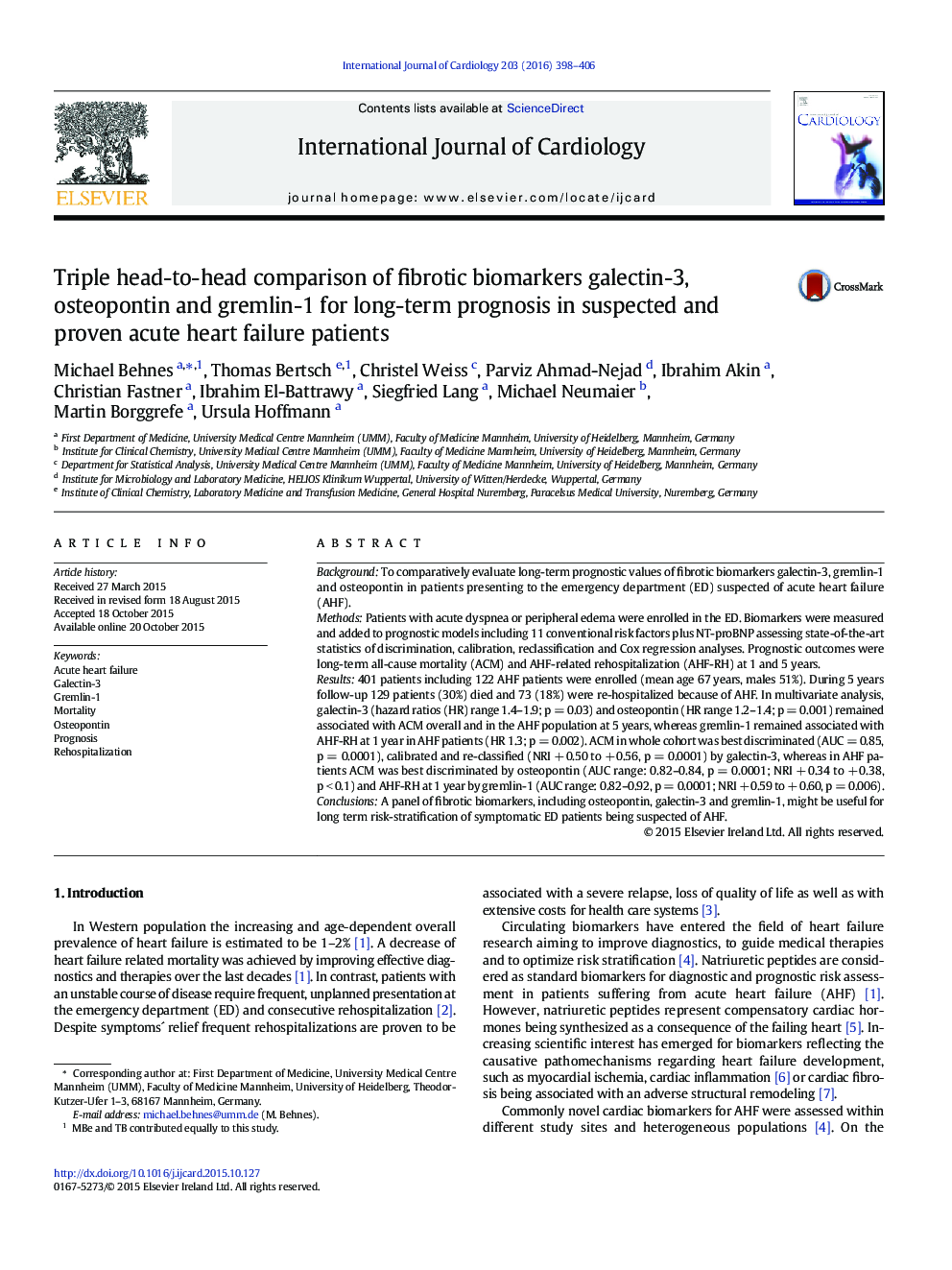| Article ID | Journal | Published Year | Pages | File Type |
|---|---|---|---|---|
| 5965626 | International Journal of Cardiology | 2016 | 9 Pages |
BackgroundTo comparatively evaluate long-term prognostic values of fibrotic biomarkers galectin-3, gremlin-1 and osteopontin in patients presenting to the emergency department (ED) suspected of acute heart failure (AHF).MethodsPatients with acute dyspnea or peripheral edema were enrolled in the ED. Biomarkers were measured and added to prognostic models including 11 conventional risk factors plus NT-proBNP assessing state-of-the-art statistics of discrimination, calibration, reclassification and Cox regression analyses. Prognostic outcomes were long-term all-cause mortality (ACM) and AHF-related rehospitalization (AHF-RH) at 1 and 5 years.Results401 patients including 122 AHF patients were enrolled (mean age 67 years, males 51%). During 5 years follow-up 129 patients (30%) died and 73 (18%) were re-hospitalized because of AHF. In multivariate analysis, galectin-3 (hazard ratios (HR) range 1.4-1.9; p = 0.03) and osteopontin (HR range 1.2-1.4; p = 0.001) remained associated with ACM overall and in the AHF population at 5 years, whereas gremlin-1 remained associated with AHF-RH at 1 year in AHF patients (HR 1.3; p = 0.002). ACM in whole cohort was best discriminated (AUC = 0.85, p = 0.0001), calibrated and re-classified (NRI + 0.50 to + 0.56, p = 0.0001) by galectin-3, whereas in AHF patients ACM was best discriminated by osteopontin (AUC range: 0.82-0.84, p = 0.0001; NRI + 0.34 to + 0.38, p < 0.1) and AHF-RH at 1 year by gremlin-1 (AUC range: 0.82-0.92, p = 0.0001; NRI + 0.59 to + 0.60, p = 0.006).ConclusionsA panel of fibrotic biomarkers, including osteopontin, galectin-3 and gremlin-1, might be useful for long term risk-stratification of symptomatic ED patients being suspected of AHF.
